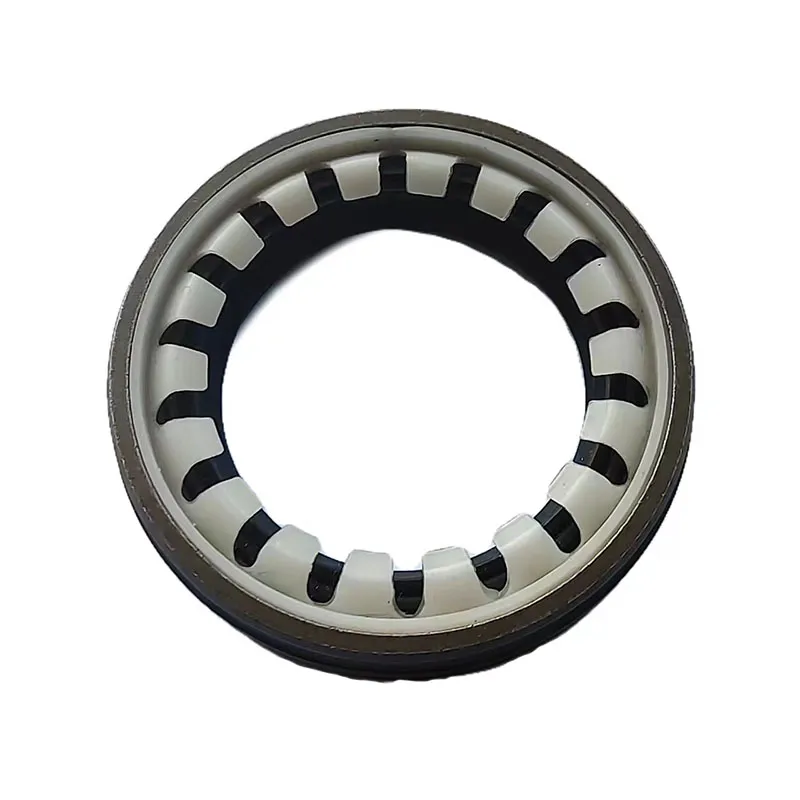Rear Crankshaft Seal Replacement for Optimal Engine Performance and Reliability
Understanding Rear Crankshaft Seal Importance, Function, and Maintenance
The rear crankshaft seal is a small yet vital component of an internal combustion engine. Positioned at the back of the engine, it serves the essential function of sealing the rear end of the crankshaft, preventing oil leaks, and protecting the engine from debris. This article delves into the design, function, symptoms of failure, and maintenance of the rear crankshaft seal, emphasizing its importance in engine performance and longevity.
What is a Rear Crankshaft Seal?
The rear crankshaft seal is typically made from durable rubber or synthetic materials, ensuring a tight fit around the crankshaft to prevent oil from escaping the engine. The rear end of the crankshaft connects to the transmission, and the seal is located where the crankshaft meets the engine block. This seal functions much like a barrier, stopping oil from leaking out and contaminants from entering.
Function of the Rear Crankshaft Seal
The primary purpose of the rear crankshaft seal is to contain the engine oil within the crankcase and to lubricate the moving parts of the engine. A well-functioning rear crankshaft seal maintains proper oil pressure, essential for efficient engine performance. Any compromise in the seal can lead to oil leaks, which can cause several issues, including decreased oil levels, engine overheating, and even failure of critical components due to insufficient lubrication.
Symptoms of Rear Crankshaft Seal Failure
Recognizing the signs of a failing rear crankshaft seal is crucial for maintaining engine health. Some common symptoms include
rear crankshaft seal

1. Oil Leaks One of the most apparent signs is visible oil leaks at the rear of the engine. You may notice oil puddles on the ground under the vehicle or oil stains around the transmission or engine area.
2. Oil Consumption If the engine oil level drops more rapidly than usual, it could indicate a leak from the rear crankshaft seal. Excessive consumption can result in severe engine damage if not promptly addressed.
3. Burning Oil Smell If oil leaks onto hot engine components, it can produce a burning smell. This not only indicates a seal failure but can also pose a fire risk if the oil ignites.
4. Checking Engine Light In modern vehicles, a malfunction in any part of the engine may trigger the check engine light. If the rear crankshaft seal is leaking, it may lead to a drop in oil pressure, prompting the onboard diagnostic system to flag an issue.
Maintenance and Replacement
Maintaining the rear crankshaft seal mainly revolves around regular oil changes and inspections. During routine maintenance, mechanics should check for signs of oil leaks and inspect the seal for any wear or damage. If a seal replacement is necessary, it is typically advisable to do so during other major engine services such as a clutch replacement or rear main seal servicing, as accessing the rear crankshaft seal may require removing the transmission, which can be labor-intensive and costly.
Conclusion
The rear crankshaft seal may not receive the same level of attention as other engine components, but its role is crucial for ensuring a well-functioning internal combustion engine. Regular maintenance, vigilance for symptoms of failure, and proper replacement procedures can help prevent oil leaks, maintain engine performance, and prolong the life of the vehicle. By keeping an eye on this small but significant component, vehicle owners can ensure that their engines remain healthy and efficient for many miles to come.
-
Understanding the Front Main Engine Seal: Purpose, Maintenance, and Installation
News Jul.29,2025
-
Understanding O-Rings and Seal Rings: Types, Applications, and Custom Solutions
News Jul.29,2025
-
Understanding Crankshaft Oil Seals: Rear Seals, Pulley Seals, and Their Role in Engine Integrity
News Jul.29,2025
-
The Importance of Front and Rear Crankshaft Seals in Engine Performance and Oil Management
News Jul.29,2025
-
Crank Oil Seals: Functions, Types, and Cost Considerations in Engine Maintenance
News Jul.29,2025
-
A Comprehensive Guide to O-Rings and Seals: Types, Materials, and Global Applications
News Jul.29,2025
-
Mastering Diesel and Performance Engine Maintenance: A Guide to Critical Oil Gaskets
News Jul.28,2025
Products categories















